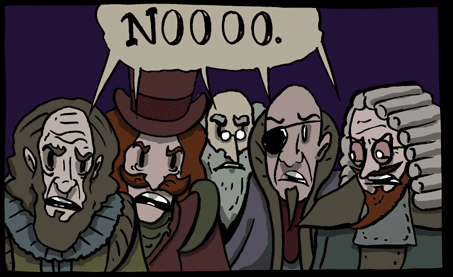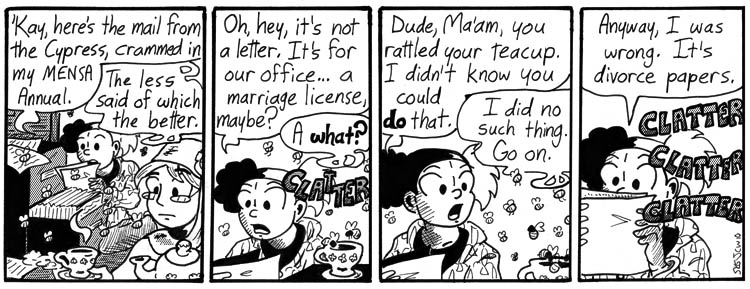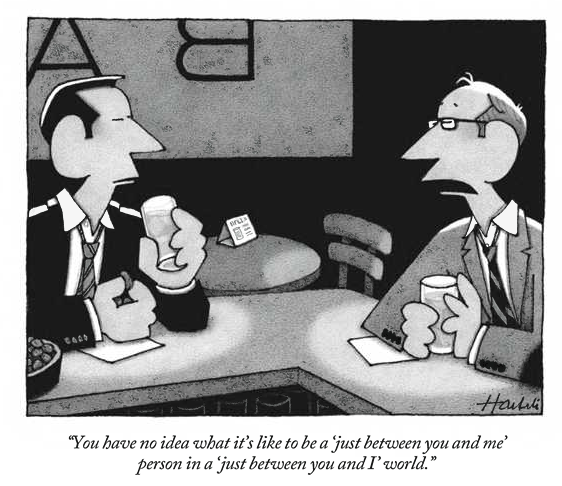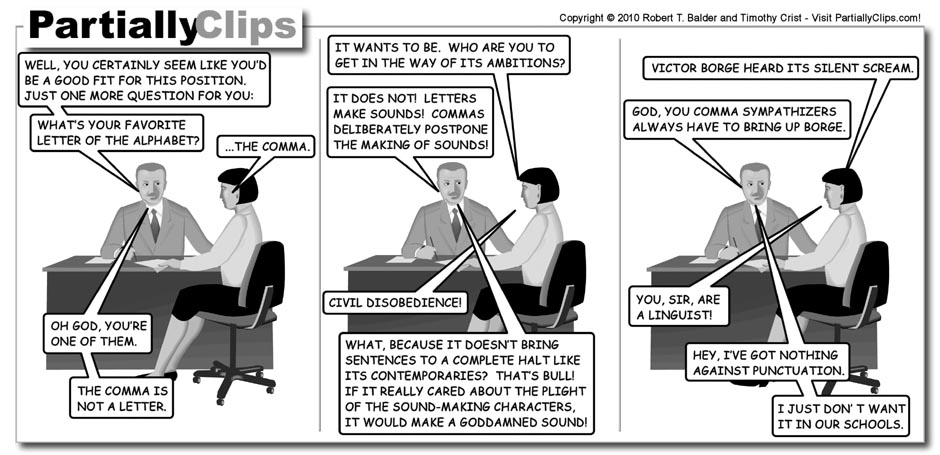Archive for Linguistics in the comics
Ninja Linguistics
EMH sent along a pointer to the 10/14/2010 Yourmometer strip:
To forestall secondary ninja incursions, let me point out that some additional background on the whole Eskimo snow words issue can be found here. [I also need to point out that this cartoon ninja linguist, though perhaps unexpected and sometimes unwanted, is much less aggressive than the last one we featured, in "How to defend yourself from bad advice about writing", 11/01/2006.]
Read the rest of this entry »
Dude unbound
Ray Dillinger sent a link to the latest Skin Horse strip, in which he observes that
The word "Dude" is used here as an interjection, followed by a (feminine) noun in direct address. The "person" directly addressed is a sentient hive of bees, who is (are? We lack grammatical categories for singular intelligences with plural bodies…) apparently getting divorce papers from a sentient cypress tree.
Read the rest of this entry »
Obscene intensificatory adverb frequencies
In the latest xkcd cartoon you can see a graph on which the frequency of intensificatory adverbs (fucking ____ in red, and ____ as shit in blue) accompanying a selection of adjectives, from annoying and pissed down through broadly decreasing frequencies to fungible and peristeronic. (The latter really does exist, and really does mean "of or pertaining to pigeons".)
Read the rest of this entry »
Suffixocation
Nina Paley's Mimi and Eunice for 8/20/2010:
Nina's comment on the strip: "I love my Libertarian friends! So it is with love I poke gentle fun at them."
[Hat tip to William Benzon.]
Taking care of people
Today's Tank McNamara features an idiom with two very different meanings:
Read the rest of this entry »
"Latin-obsessed 17th century introverts"?
Some Language Log readers have long suspected me of secret prescriptivist sympathies, and I'm about to add fuel to the fire by standing up for John Dryden. Sort of.
It all starts with today's SMBC. A student asks "Can I end my sentence with a preposition?", and the teacher responds "Good question! Let's see what a group of Latin-obsessed 17th century introverts decided!" The introverts' cartooned answer:

Read the rest of this entry »
Texting while operating machinery
A Zits on modern menaces:
I've been getting reports of texting while bicycling / bicycling while texting, too.
Permalink Comments off
Irreproducible results
This morning's Non Sequitur is not, as far as I know, a comment on my previous post:
Read the rest of this entry »
Placebo questions
The phrase placebo questions comes up in today's Dilbert strip. You can see the intended meaning (once you realize that Dilbert's boss has handed him a project so confidential that a lot depends on his keeping it rigorously secret), despite the stretch from the medical use that nearly everyone is familiar with. It's an unusual word, placebo: it comes directly from an inflected word of another language. It is the first person singular future form of the verb placere in Latin: it means "I will please". It apparently entered common parlance on the strength of being the first word of the first antiphon in the Latin text of the Catholic service of vespers for the dead, and somehow got picked as the technical term for an inactive substance used as a control in testing pharmaceutical products.
Read the rest of this entry »









